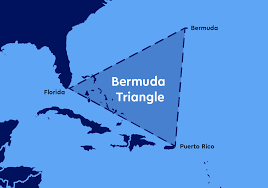Mid-Ocean Ridge Example: A Deep Dive into the Mid-Atlantic Ridge

When we look at a map of the world’s oceans, it’s easy to see the vast blue expanse as static and still. But beneath the ocean surface lies a dynamic, ever-changing landscape shaped by immense geological forces. One of the most fascinating features of the seafloor is the mid-ocean ridge—a continuous underwater mountain range formed by tectonic activity. Among the many mid-ocean ridges that crisscross the planet, the Mid-Atlantic Ridge stands out as one of the most significant and well-known examples.
This blog explores what mid-ocean ridges are, how they form, why the Mid-Atlantic Ridge is important, and what it tells us about the workings of our planet.
What is a Mid-Ocean Ridge?
A mid-ocean ridge is an underwater mountain system formed by plate tectonics. It occurs at a divergent plate boundary, where two tectonic plates are moving apart. As the plates separate, magma from the Earth’s mantle rises to fill the gap, cools, and solidifies to form new oceanic crust. This process is known as seafloor spreading.
These ridges are not singular peaks but rather massive, often sinuous mountain chains that extend for thousands of kilometers. They are among the longest geological features on Earth—longer than any mountain range on land. Mid-ocean ridges are vital to the renewal of the ocean floor and play a central role in the theory of plate tectonics.
The Mid-Atlantic Ridge: A Prime Example
The Mid-Atlantic Ridge (MAR) is perhaps the best-known mid-ocean ridge and an ideal example of this geologic phenomenon. It runs from the Arctic Ocean in the north to the Southern Ocean near Antarctica, stretching over 16,000 kilometers (10,000 miles). The MAR is a classic example of a slow-spreading ridge, with tectonic plates moving apart at an average rate of about 2.5 centimeters (1 inch) per year.
Tectonic Plates Involved:
-
In the northern hemisphere, the MAR separates the North American Plate from the Eurasian Plate.
-
In the southern hemisphere, it separates the South American Plate from the African Plate.
This slow, steady movement of plates creates a continuous cycle of crust creation that has been active for millions of years.
A Rare View Above Sea Level: Iceland
One of the unique aspects of the Mid-Atlantic Ridge is that it surfaces above sea level in certain locations, most notably in Iceland. This island nation sits right atop the MAR, making it one of the few places on Earth where the effects of a mid-ocean ridge can be seen on land.
In Iceland, you can actually walk between the North American and Eurasian tectonic plates. The Þingvellir National Park (Thingvellir) is a rift valley formed by the diverging plates, and it is a major geological and tourist attraction. Volcanic activity, earthquakes, and geothermal features are all direct results of the island’s location on the ridge.
Formation Process: Seafloor Spreading
The Mid-Atlantic Ridge provides a clear demonstration of the seafloor spreading process. Here’s how it works:
-
Divergence: Two oceanic plates move away from each other due to convection currents in the mantle.
-
Magma Uplift: As the plates diverge, pressure decreases in the mantle below, allowing magma to rise through the gap.
-
Crust Formation: The magma cools and solidifies to form new oceanic crust.
-
Expansion: Over time, this new crust is pushed outward, slowly expanding the ocean basin.
The magnetic patterns on either side of the MAR—alternating stripes of normal and reversed polarity—serve as a geological “tape recorder,” preserving the history of Earth’s magnetic field and confirming the theory of plate tectonics.
Why the Mid-Atlantic Ridge is Important
1. Geological Significance
The MAR is crucial for understanding the dynamics of Earth’s lithosphere. It’s a natural laboratory for studying processes like volcanism, plate motion, and crustal formation. The ridge helps geologists understand how continents drift and how oceans evolve over millions of years.
2. Biological Discoveries
Deep-sea explorations of the Mid-Atlantic Ridge have uncovered hydrothermal vents—fissures on the seafloor that emit hot, mineral-rich water. Around these vents, unique ecosystems thrive without sunlight, relying on chemosynthesis instead of photosynthesis. Organisms such as giant tube worms, blind shrimp, and chemosynthetic bacteria have rewritten what we know about life’s adaptability.
3. Natural Hazards
Although it lies mostly underwater, the MAR is associated with significant seismic and volcanic activity. Iceland’s frequent volcanic eruptions and earthquakes are a direct result of the tectonic forces at play. Understanding these processes helps scientists monitor hazards and potentially forecast natural disasters.
4. Resource Potential
The Mid-Atlantic Ridge, like other mid-ocean ridges, is rich in mineral resources. Hydrothermal vents can create deposits of valuable metals such as copper, zinc, gold, and silver. While deep-sea mining is still in its infancy and raises environmental concerns, the MAR represents a potential future source of critical minerals.
Conclusion: The Power Beneath the Waves
The Mid-Atlantic Ridge is more than just an underwater mountain range—it is a living, breathing example of Earth’s inner workings. It embodies the incredible force of plate tectonics and serves as a key site for geological, biological, and environmental research.
From its towering submarine peaks to its role in the formation of continents and oceans, the Mid-Atlantic Ridge helps us appreciate the dynamic planet we live on. Whether you’re a geologist, a marine biologist, or simply a curious explorer, this remarkable feature offers endless opportunities for discovery.
As technology continues to advance, we can expect even more fascinating insights into the secrets hidden beneath the ocean’s surface. But for now, the Mid-Atlantic Ridge remains one of the most iconic and scientifically valuable examples of a mid-ocean ridge on Earth.







Leave a Comment